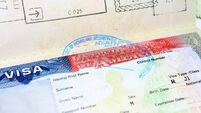Debt strategy key to Cork Airport’s viability
The common denominator in these conversations is frustration with the perceived lack of activity at a gateway which is an important enabler of economic activity. Having Cork Airport humming would be a positive factor in the ongoing recovery of the southern economy and especially that of Cork City.
A debate about the airport’s optimal future can quickly descend into a general slagging off of the Dublin Airport Authority (DAA) which owns the Cork facility. That tendency has been amplified since the separation of Shannon Airport which has been followed by a slew of new route announcements.
Each new route launch at Shannon is akin to slowly pouring salt on an open wound around Cork. Is that justified?
The rather large elephant in the room is that new terminal which was built at an eye-popping cost of €100m in 2006. That project created short-term construction jobs but the benefits were eclipsed by the long-term funding consequences for the airport.
In the same way that puppies are not just for Christmas, expensive airport terminals are in place for decades and carry with them residual borrowings. This is the key legacy item that is holding back Cork Airport’s development now, because the capital plus interest costs of that debt are restricting the airport’s ability to compete for new traffic. Any professional management team would be irresponsible to ignore the fact that debts must be honoured and this is where the DAA struggles with Cork.
We must remember too that the DAA has itself come from a dark place as a collapse in traffic and terminal- related debts hobbled its group balance sheet. New management, the separation of Shannon and a resurgence in business at Dublin Airport are all valuable inputs to the rehabilitation of DAA’s finances. It is against this backdrop that solving Cork’s growth inhibitor must be considered.
First, a couple of hard facts; (1) the motorway system in Ireland now makes Dublin and Shannon viable gateways for air passengers moving to and from the Cork region; (2) Cork Airport is in absolute terms small with annual passenger numbers of about 2.5 million, the equivalent of the 17th largest airport in the UK for example, and; (3) despite local complaints about the airport’s disadvantages, US multinationals continue to establish themselves and grow in the Cork area.
These factors cannot be ignored when debating how the airport should evolve.
Anyone who wants to ignite air traffic in Cork must formulate a way to sharply reduce the debt attached to that terminal project. If it can be cut then the lower costs of running the facility can be converted to lower prices that attract airlines. Without finding a solution to that debt I suspect the growth trajectory in volume at the airport will be pedestrian.
While US flights may develop over time I suspect, making hubs like Heathrow and Paris even more accessible on a multi-day basis while hooking up to Aer Lingus long-haul through Dublin are the realistic platforms for long-haul expansion.
On short-haul only, highly competitive costs will entice more routes and that depends on cutting debt.
Without addressing its leverage, Cork will struggle to compete with Shannon and Dublin. A hard lesson about over-borrowing to build is being learnt not just across our economy but at the South’s key airport too.
















